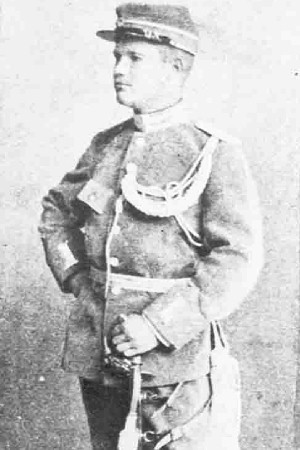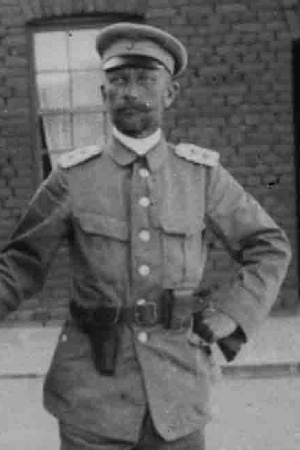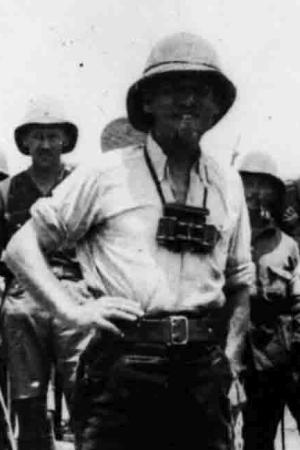| |
|
|
|
|
| |
Silk Waist Belts
Officers of the
Prussian army wore silk covered belts with two stripes of
lace in the
Prussian colours- white with black stripes. Officers of the
Bavarian army wore white silk belts with blue stripes, Saxon
officers wore belts with green stripes, Hessian officers had
red stripes and so forth. Officers of the
Schutztruppe, Navy, Marine Infantry and East Asian
Occupation Brigade wore the Prussian belt but with the addition
of a central red stripe to make up the Imperial colours.
Up until 1901 the East Asian
Expeditionary Corps wore state variations on their belts
with Prussian officers belts white and black as described
above, Bavarians with white and blue, Saxons with white and
green and Württembergers in
the same white, black and red as the Imperial officers. From
1901 all East Asian officers wore silk belts in Imperial
Colours.
These belts were not
practical in the field and were often replaced with leather
belts sometimes retaining the same officers belt buckle or with Sam
Brown belts as described below. |
|
| |
|
|
|
|
|
|
|
|
|

Leutnant Eggers
South West African Schutztruppe
Eggers was a career Schutztruppe officer who had been in service
for over a decade before he was killed at the outbreak of the
Herero Rebellion in 1904. In this photograph he wears the 1891
uniform with its notable standing collar. He wears it with
parade aiguillettes, his officers sword and the short lived
corduroy kepi.
He wears the officers silk waist
belt with Imperial colour threads.
Photo ©
Frankfurt University Koloniales Bildarchiv |

Georg von Glasenapp
Commander of the II. Seebataillon c1904
Glasenapp commanded the Marine
Expeditionskorps in the South West Africa during
the Herero Rebellion. He wears the dark blue home uniform of the
Marine Infantry with an impressive medal display
including the
Prussian Order of the
Red Eagle third
class with bow and swords, the
China Campaign Medal and the
Japanese Order of the Rising Sun fourth class.
He wears the officers silk waist belt with Imperial colour threads.
Photo ©
Joe Robinson
|

Leutnant,
East Asian Infantry Regiment c1901-02
He wears the 1900 field grey
uniform with matching Pickelhaube. Note the chevron worn by all
officers and NCOs of the East Asian Occupation Brigade on his left
arm. He wears the officers silk waist belt with Imperial colour
threads.
Photo ©
Joe Robinson
|

Naval Officers Belt and
Buckle
Photo © Doppler
Collection
| |
|
|
| |
Sam Brown
Belts
The lace belts were impractical on active
service and were usually
replaced with either plain
leather belts retaining the same officers belt buckle or
with Sam Brown style belts by officers of most overseas
forces. The Sam Brown belt was a waist belt supported by a
shoulder strap worn across the chest. They could be worn
from either shoulder. A minimum of equipment was usually
carried on them, some times a pistol or binocular case.
As these items were privately purchased small variations in
style and manufacture were seen. |
|
| |
|
|
| |
|
|
|

Major Lagiewsky
South West African Schutztruppe, 1914
He wears the 1896 Schutztruppe khaki uniform
with corduroy field cap. He wears the Sam Brown style belt from the left
shoulder with a small pistol.
Photo ©
Frankfurt University Koloniales Bildarchiv
|

Major Franke
South West African Schutztruppe
The last commander of the South West African Schutztruppe
wears the 1896 Schutztruppe khaki uniform with field cap. He
wears the Prussian Pour-le-Merite medal at his throat.
He has his right arm in a sling from an injury
though wears his Sam Brown style belt on the injured
shoulder.
Photo ©
Frankfurt University Koloniales Bildarchiv |

Major Bethe
South West African Schutztruppe, 1915
This photograph shows Major Botha Bethe attending the
surrender of the Schutztruppe at Korab on the 9th of July
1915. He wears the 1896 Schutztruppe khaki uniform with
Südwester hat. This photograph shows the rear of the Sam
Brown style belt, again worn over the left shoulder.
Photo ©
Frankfurt University Koloniales Bildarchiv |
| |
|
|
| |
|
|
| |
Other
Variations
By their very
nature, officers privately purchased uniforms and
equipment varied in detail from each other. Officers
also had a highly individual sense of uniform on
campaign. Below are a few examples of irregular
equipment worn by officers in the African colonies. |
|
| |
|
|
|
| |
|
|
|

Oberst Berthold Deimling
South West African Schutztruppe c1905
At the time this photo was taken c1905, Deimling was commander of the the
Schutztruppe's 2. Feldregiment, he later commanded the South West
African Schutztruppe 1906-07. He wears the 1896 khaki uniform with
corduroy field cap. Note the braided shoulder straps with two pips for
colonel or Oberst. His equipment consists of a leather waist belt
with an open buckle, carrying a small pistol holster and what is
probably a privately purchased single ammunition pouch on his left.
Photo ©
Frankfurt University Koloniales Bildarchiv |

Officer
East African Schutztruppe c1917
This officer wears
the 1913 tropical helmet, a plain shirt and cut off short
trousers. He has only a leather belt and binoculars, as was
commonly carried by officers on campaign. He may also have a
pistol holster out of view.
Photo ©
Frankfurt University Koloniales Bildarchiv |

Effendi
East African Schutztruppe c1900
This Effendi or African officer wears the officers 1896
khaki tunic and a red fez. He has a sword held on a leather
belt with the officers buckle as usually seen on the silk
belt and possibly a stripe of the silk belt vertically to
the side of the buckle.
Photo ©
Frankfurt University Koloniales Bildarchiv |
| |
|
|
|
Please
contact me here if you have more
information or photos on this topic.
Back to
Main Menu for German Colonial Uniforms
|
| |
|
|
|